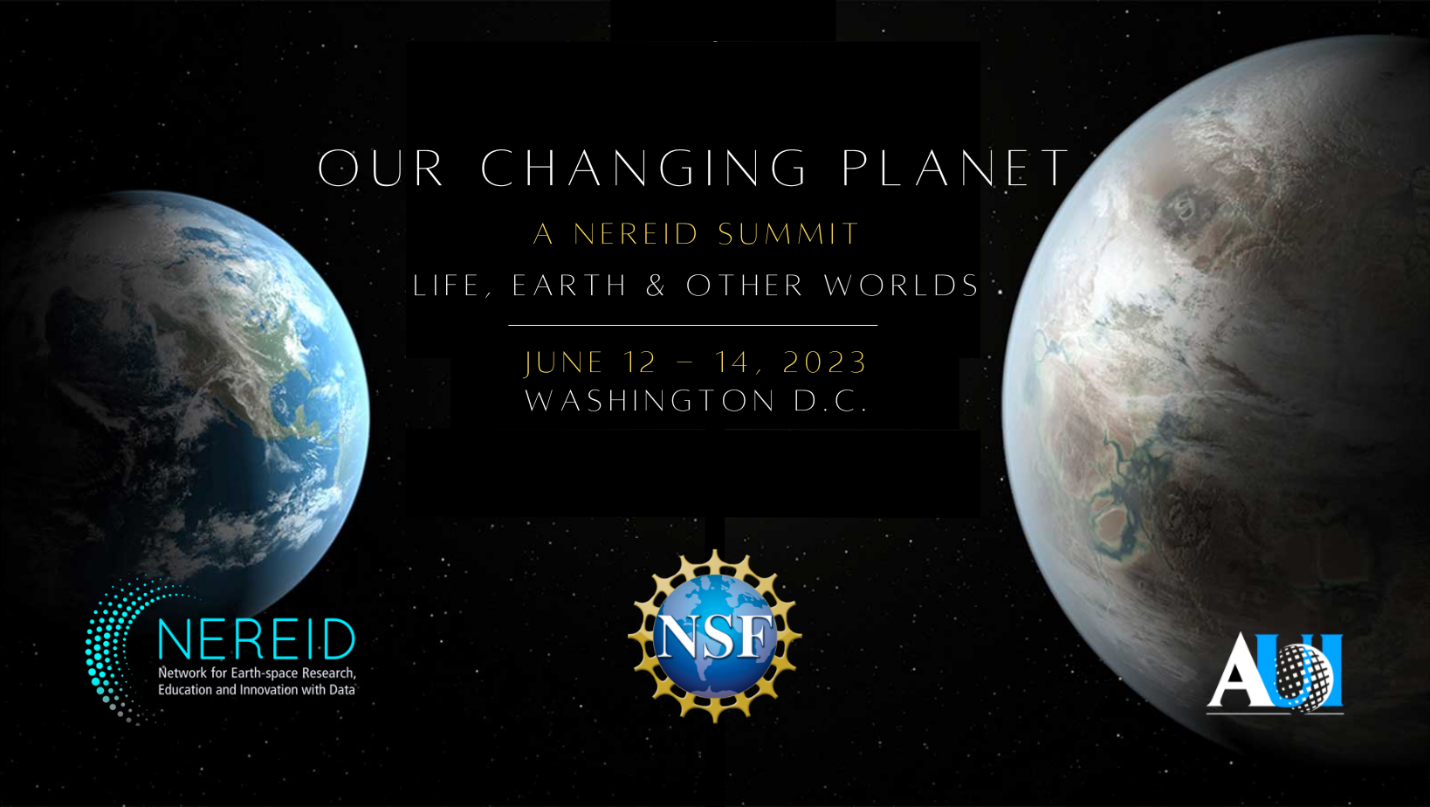The U.S. National Science Foundation National Radio Astronomy Observatory (NSF NRAO) has received funding to expand its study of an invisible—and crucial—scientific and technological resource: the radio spectrum.
Recent News
Largest Oort Cloud Comet Ever Observed Reveals Its Secrets with ALMA’s Powerful Gaze
A team of astronomers has made a groundbreaking discovery by detecting molecular activity in comet C/2014 UN271 (Bernardinelli-Bernstein)—the largest and second most distantly active comet ever observed from the Oort Cloud.
Unusual stellar nurseries near our galaxy’s center puzzle scientists
New research led by Dr. James De Buizer at the SETI Institute and Dr. Wanggi Lim at IPAC at Caltech revealed surprising results about the rate at which high-mass stars form in the galactic center of the Milky Way.
Announcing NEREID’s DC Summit: Our Changing Planet

Welcoming Policymakers, Educators and Scientists to Broaden the Search for Life
Washington, D.C.—Today, the Network for Earth-space Research, Education and Innovation with Data (NEREID) issued an open invitation for students, policymakers, researchers, educators, indigenous and philosophical knowledge holders, and other curious minds to explore solutions to society’s greatest challenges, such as climate change, food and water shortages and space exploration, through interdisciplinary lenses and convergence science approaches at the Our Changing Planet Summit, to be held in the D.C. metro area on June 12 through 14. The public is encouraged to register online to participate.
Our Changing Planet’s deviation from conventional conference structure will provide participants with opportunities for cross-disciplinary networking and brainstorming not otherwise possible. The summit’s three-day schedule includes hands-on activities, lightening talks and breakout sessions.
“We are envisioning a lot of interaction across disciplines. For example, a biologist working with an astronomer might discover certain migratory patterns on Earth that could be observable from distant stars and open new insights for indicators of extraterrestrial life, but how often are they in the same room together?” asked Tiffany Stone Wolbrecht, AUI STEM education officer. “We’ll be exploring convergence and the importance of interdisciplinary teams, empower such collaborations, and offer effective platforms, services and information resources for participants to use.”
NEREID works with academia, industry and research to identify, amplify, and scale efforts to conduct research, develop tools, and engage communities of learners and policymakers in Earth and space science. NEREID is made possible by the National Science Foundation (NSF) and led by Associated Universities, Inc. (AUI).
“The world now creates over 2.5 exabytes of data daily and data from Earth and space sciences represent a significant and important source of these accumulating data,” said Tim Spuck, AUI’s director of education and public engagement and NEREID PI. “The revolution in big data has resulted in a widening gap between learning and the demands of the science and engineering workplace, and through interdisciplinary collaboration we can improve data sharing practices.”
Keynote speakers include David H. Grinspoon, senior scientist at the Planetary Science Institute; Nirav Merchant, co-PI for CyVerse and Jetstream, and lead for the cyberinfrastructure team for National Artificial Intelligence Institute for Resilient Agriculture (AIIRA); Martin Ogle, founder of Entrepreneurial Earth, LLC; and Gretchen Stahlman, assistant professor of library and information science at Rutgers University.
Registration is now open for the NEREID Summit in Washington, D.C. Build new connections and develop new initiatives across earth, space, data, education, policy and more. For more information, please visit the NEREID website.
Recent News
NSF NRAO Leads Critical Spectrum Studies to Safeguard Radio Astronomy
The U.S. National Science Foundation National Radio Astronomy Observatory (NSF NRAO) has received funding to expand its study of an invisible—and crucial—scientific and technological resource: the radio spectrum.
Largest Oort Cloud Comet Ever Observed Reveals Its Secrets with ALMA’s Powerful Gaze
A team of astronomers has made a groundbreaking discovery by detecting molecular activity in comet C/2014 UN271 (Bernardinelli-Bernstein)—the largest and second most distantly active comet ever observed from the Oort Cloud.
Unusual stellar nurseries near our galaxy’s center puzzle scientists
New research led by Dr. James De Buizer at the SETI Institute and Dr. Wanggi Lim at IPAC at Caltech revealed surprising results about the rate at which high-mass stars form in the galactic center of the Milky Way.
